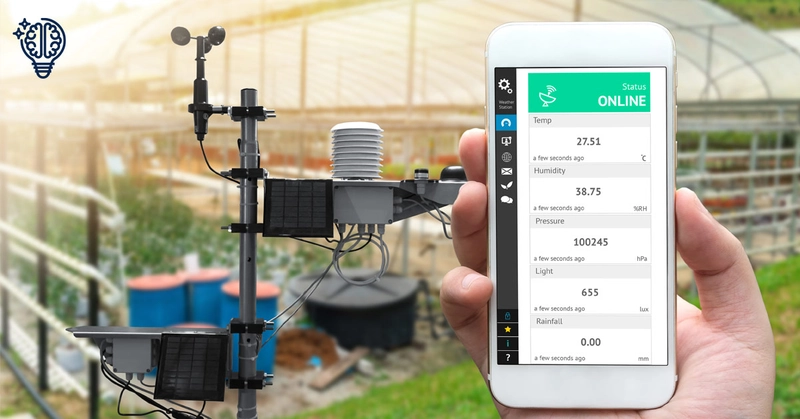
There's no need to wait for the six o'clock news or check your phone to get a weather forecast. You can easily set up a weather station at home or work and become your own bureau of meteorology.
The weather is always on our minds. Whether you're planning an outing, a holiday or deciding when to head out for some exercise, you'll likely either glance out the window or consult a weather app to see what's ahead. But your own local weather station can tell you what's happening in your own backyard, helping you predict meteorological conditions.
What's in a weather station?
A basic weather station will let you know what's going on inside and outside your home or office. It can tell you what the temperature is and how much moisture is in the air (this is called humidity). An external sensor connects wirelessly to the main console inside, so you can see what's happening outside on some models. You can add more external sensors so you can measure the temperature and humidity in different rooms or parts of your property.
Weather stations also measure barometric pressure. As air gets warmer or colder, it exerts different pressures on a sensor. Reading these changes allows computer models to predict upcoming weather changes. While simple weather stations can tell you the barometric pressure at a moment in time, more advanced weather stations store those readings and use them to develop weather forecasts.
By performing the prediction using data from your location, weather stations can give you an indication as to whether rain is about to hit or whether it will clear in your area. That means you're not left hoping that the city-wide forecast applies to your local area.
More advanced weather stations can also collect other data. An anemometer can tell you wind speed and direction and a rain gauge will measure your local rainfall. Many weather stations don't just measure what's going on. They can also provide you with alerts. Having a warning that tells you when the wind is picking up can prompt you to secure your outdoor furniture and having an alarm when rain starts can help you get the washing in quickly.
A Wi-Fi-capable weather station lets you collect all that data and then share it with weather networks like Weathercloud and Weather Underground. And more powerful weather stations also give you more information as they can calculate wind chill and a 'Feels like' reading that takes into account the temperature, humidity, dew point, wind chill and other factors.
Those online services can use data from other weather stations near you in order to build a more complete picture of the local weather by aggregating your data with that of other local weather buffs.
Tips for placing your weather station
When you're setting up your external weather sensors, look for a place where the sensor is easy to reach but won't get in the way of everyday activities. Accessibility is important as you'll need to change the batteries from time to time. Your anemometer should be about 2 metres above the ground so you may need to install it onto a post or secure it to your roof. The temperature sensor should be on a south-facing wall, out of direct sunlight.
Different weather stations have different transmission ranges. Higher-end units can send their data to a receiver well over 100 metres away. Others may have a more limited range, like 30 metres.
Once you've got your weather station set up, you'll have all the information you need to answer, 'How's the weather?' right in your backyard. You'll also be able to know what's happening with the local climate without unlocking your phone or switching on the telly.

